Marbles from Dollar Tree test positive for Lead, Arsenic, Antimony, and Cadmium using XRF technology
For those new to the Lead Safe Mama website:
Tamara Rubin is a multiple-federal-award-winning independent advocate for childhood Lead poisoning prevention and consumer goods safety, and a documentary filmmaker. She is also a mother of Lead-poisoned children (two of her four sons were acutely Lead-poisoned in 2005).
- Tamara owns and runs Lead Safe Mama, LLC — a unique community collaborative woman-owned small business for childhood Lead poisoning prevention and consumer goods safety.
- Since July 2022, the work of Lead Safe Mama, LLC has been responsible for six product recalls (FDA and CPSC).
- All test results reported on this website are science-based, accurate, and replicable.
- Please check out our press page to see some of the news coverage of our work, linked here.
Is this a problem (finding toxic heavy metals in glass marbles)?
The presence of these toxicants does not necessarily mean these marbles will directly harm the child using them. My concern is more for “the planet ” (i.e. our habitat) and for, well, the principle of the thing!… Regardless of regulatory standards (and the various huge, glaring loopholes within those regulations), and no matter whether there is any direct risk to the “user “ (a child), it is my firm belief that children’s toys should never test positive for any level of even one toxicant, let alone four separate potent neurotoxins and carcinogens!
Additives vs. Contaminants
Toys containing heavy metals is inexcusably offensive in principle; these levels (primarily the levels of Antimony and Arsenic found) are not simply “trace contaminants” — they are ingredients deliberately chosen and used in the manufacturing process. The colors in these particular marbles were made by adding incredibly toxic, environmentally disastrous heavy metals to the molten glass.
Primary motive: “cost-saving” vs. safer alternatives
Whereas using toxic metals to produce vibrant colors yields a cheap product that is cute, lovely, and generally thought of as harmless to the user, the direct and indirect devastating environmental contamination, and poisoning of communities — including plenty of children — throughout the world as a result of the mining, refining, and manufacturing exposure to these toxicants is profound and unavoidable. Moreover, and this is key, there are non-toxic alternatives to the use of these particular toxic substances that achieve the same results, minus the unacceptable environmental and human costs.
XRF testing for toy marbles purchased at a Dollar Tree store
Continue reading below the image:
#1) White swirl inside clear glass (above)
- Lead (Pb): 161 +/- 32 ppm
- Arsenic (As): 223 +/- 34 ppm
- Barium (Ba): 20,200 +/- 700 ppm
- Antimony (Sb): 310 +/- 66 ppm
- Iron (Fe): 942 +/- 182 ppm
Continue reading below the image:
 #2) Light orange swirl inside clear glass (above)
#2) Light orange swirl inside clear glass (above)
- Lead (Pb): 69 +/- 28 ppm
- Cadmium (Cd): 78 +/- 39 ppm
- Arsenic (As): 1,365 +/- 80 ppm
- Barium (Ba): 13,800 +/- 700 ppm
- Chromium (Cr): 83 +/- 43 ppm
- Antimony (Sb): 316 +/- 89 ppm
- Iron (Fe): 1,108 +/- 215 ppm
Continue reading below the image:
 #3) Dark orange swirl inside clear glass (above)
#3) Dark orange swirl inside clear glass (above)
- Lead (Pb): 252 +/- 39 ppm
- Cadmium (Cd): 208 +/- 33 ppm
- Arsenic (As): 171 +/- 36 ppm
- Barium (Ba): 18,500 +/- 700 ppm
- Antimony (Sb): 280 +/- 67 ppm
- Iron (Fe): 953 +/- 181 ppm
#4) Dark blue swirl inside clear glass
- Lead (Pb): 45 +/- 28 ppm
- Cadmium (Cd): 59 +/- 35 ppm
- Arsenic (As): 988 +/- 75 ppm
- Barium (Ba): 31,300 +/- 1,200 ppm
- Chromium (Cr): 93 +/- 49 ppm
- Antimony (Sb): 149 +/- 76 ppm
- Iron (Fe): 668 +/- 239 ppm
#5) Light blue swirl inside clear glass
- Lead (Pb): 54 +/- 21 ppm
- Cadmium (Cd): 46 +/- 30 ppm
- Arsenic (As): 1,159 +/- 59 ppm
- Barium (Ba): 15,900 +/- 600 ppm
- Chromium (Cr): 132 +/- 34 ppm
- Antimony (Sb): 258 +/- 69 ppm
- Iron (Fe): 845 +/- 173 ppm
Continue reading below the image:
#6) Turquoise-blue swirl inside clear glass (above)
- Arsenic (As): 1,253 +/- 82 ppm
- Barium (Ba): 13,600 +/- 800 ppm
- Chromium (Cr): 67 +/- 40 ppm
- Antimony (Sb): 220 +/- 95 ppm
- Iron (Fe): 1,013 +/- 232 ppm
#7) Light-green inside clear glass
- Lead (Pb): 49 +/- 21 ppm
- Cadmium (Cd): 56 +/- 30 ppm
- Arsenic (As): 1,251 +/- 61 ppm
- Barium (Ba): 14,800 +/- 600 ppm
- Chromium (Cr): 83 +/- 45 ppm
- Antimony (Sb): 359 +/- 70 ppm
- Copper (Cu): 210 +/- 55 ppm
- Iron (Fe): 1,022 +/- 176 ppm
Continue reading below the image:
 #8) Yellow star inside clear glass
#8) Yellow star inside clear glass
- Lead (Pb): 86 +/- 26 ppm
- Cadmium (Cd): 48 +/- 29 ppm
- Arsenic (As): 221 +/- 30 ppm
- Barium (Ba): 19,000 +/- 700 ppm
- Chromium (Cr): 51 +/- 29 ppm
- Antimony (Sb): 232 +/- 65 ppm
- Iron (Fe): 744 +/- 170 ppm
Continue reading below the image:
#9) White glass with red, yellow, and blue swirls
- Cadmium (Cd): 457 +/- 52 ppm
- Arsenic (As): 337 +/- 46 ppm
- Barium (Ba): 6,048 +/- 527 ppm
- Chromium (Cr): 46 +/- 26 ppm
- Antimony (Sb): 143 +/- 89 ppm
- Selenium (Se): 251 +/- 53 ppm
- Zinc (Zn): 11,900 +/- 400 ppm
- Iron (Fe): 885 +/- 155 ppm
- Titanium (Ti): 158 +/ – 61 ppm
As always, thank you for reading and sharing these articles. Please let me know if you have any questions.
Tamara Rubin
#LeadSafeMama
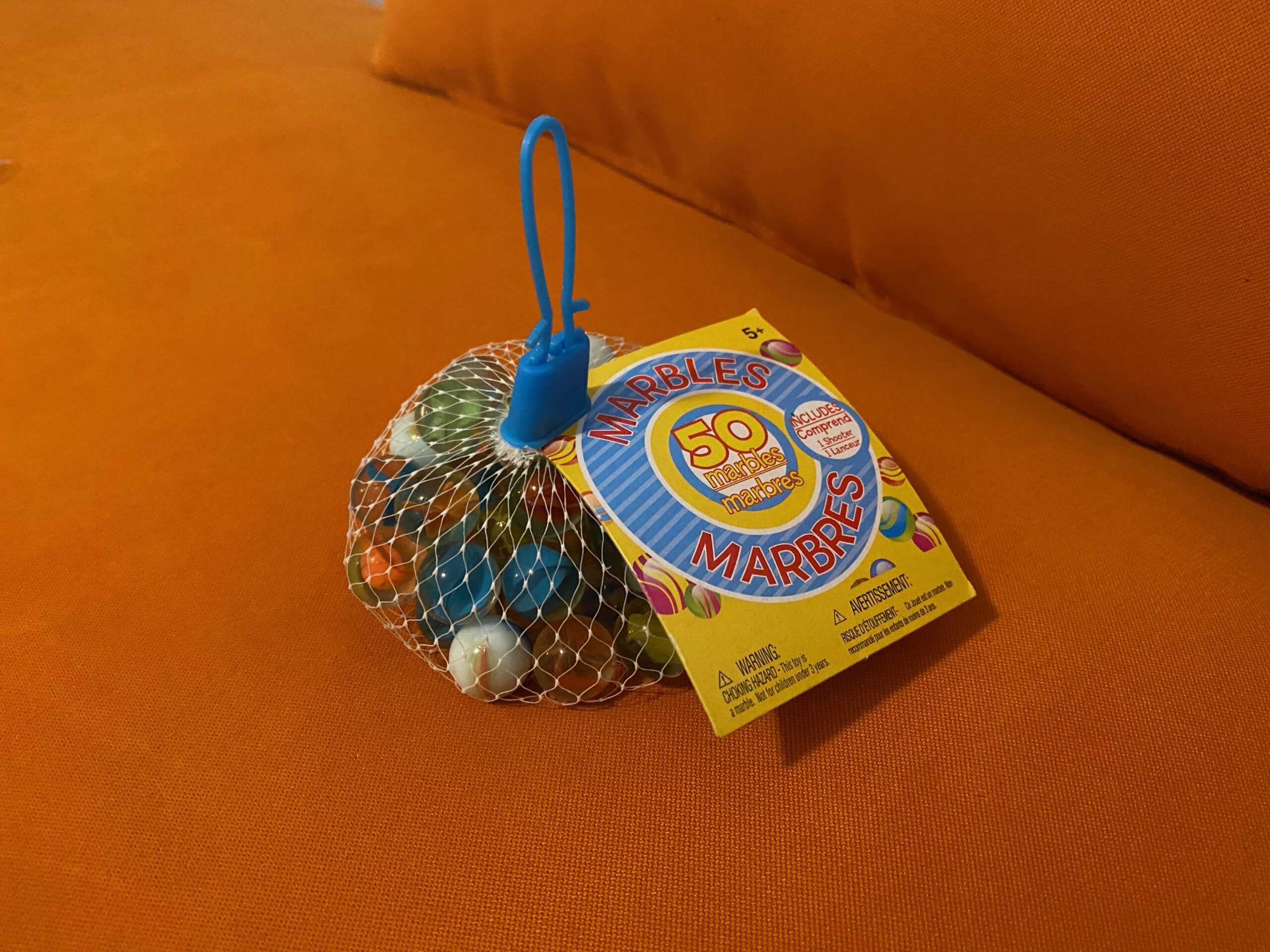
Never Miss an Important Article Again!
Join our Email List





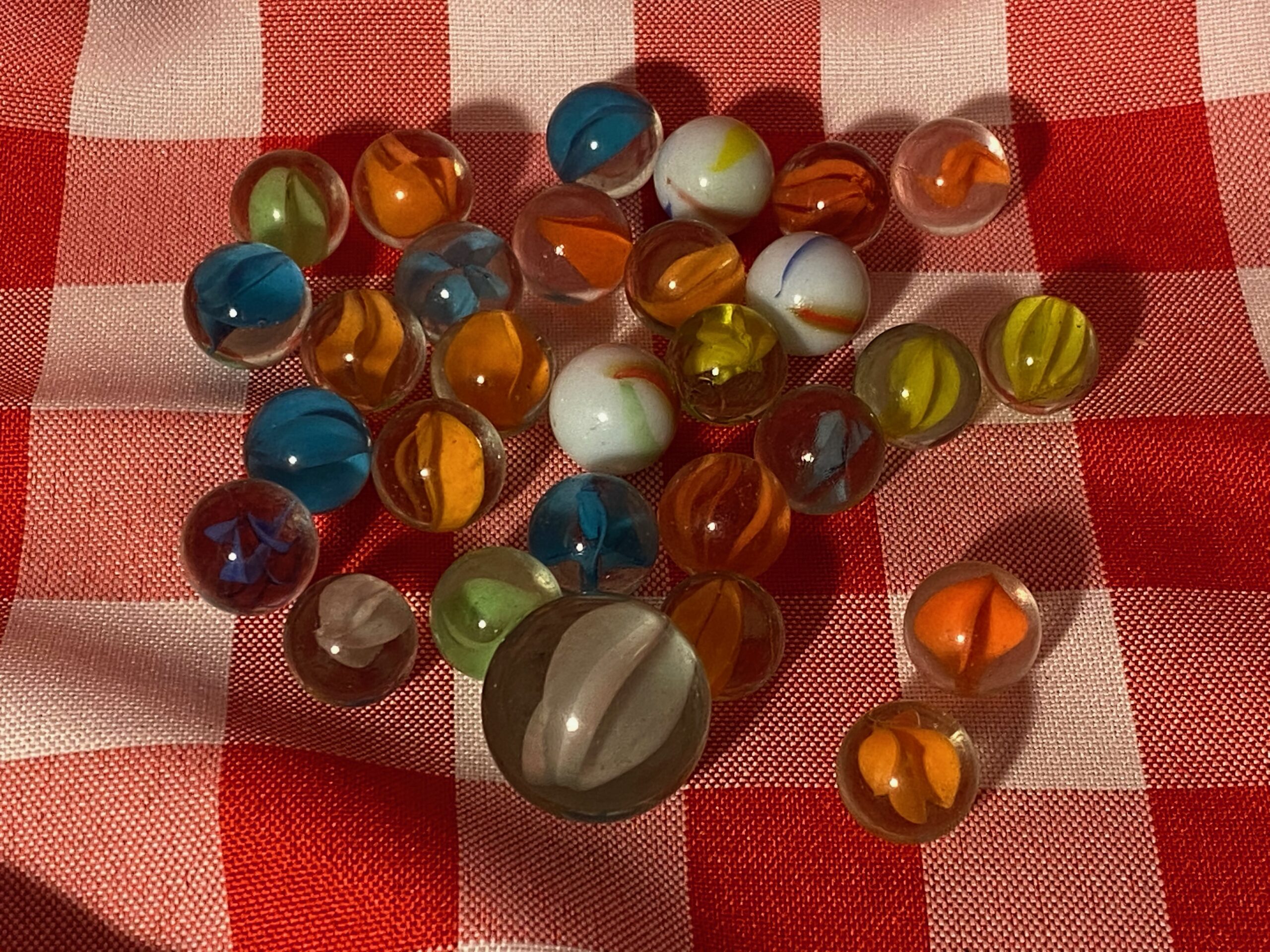
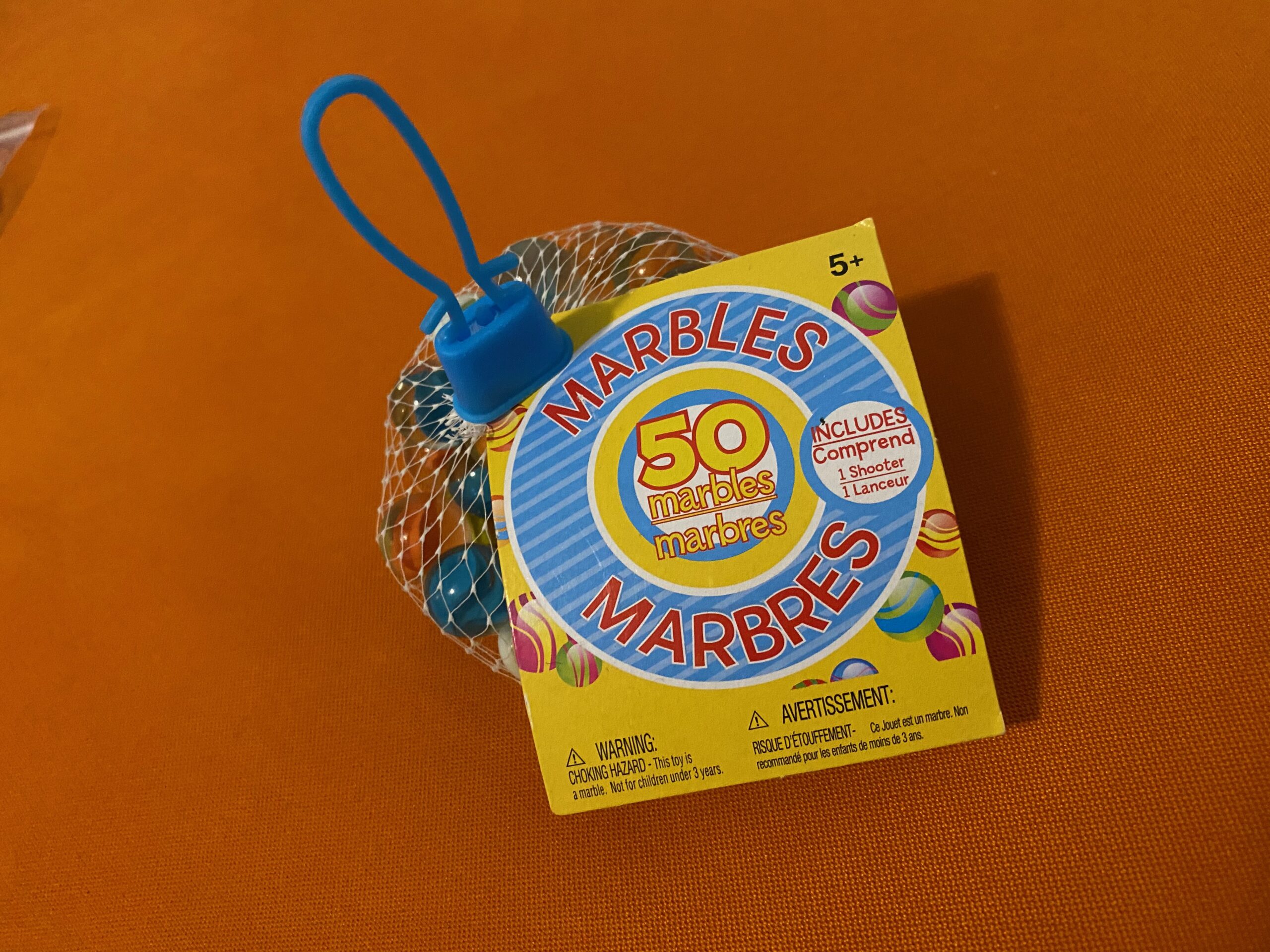
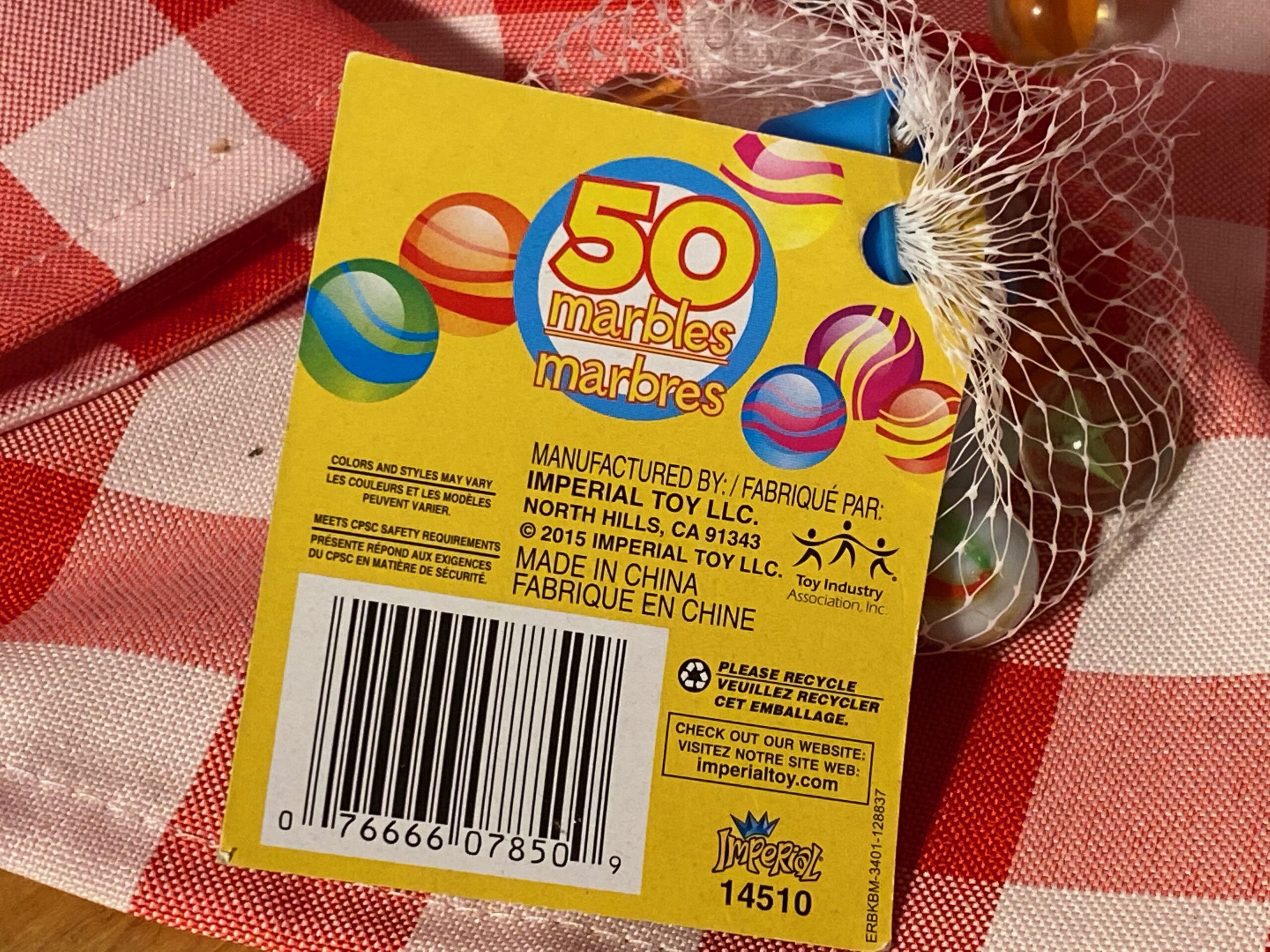
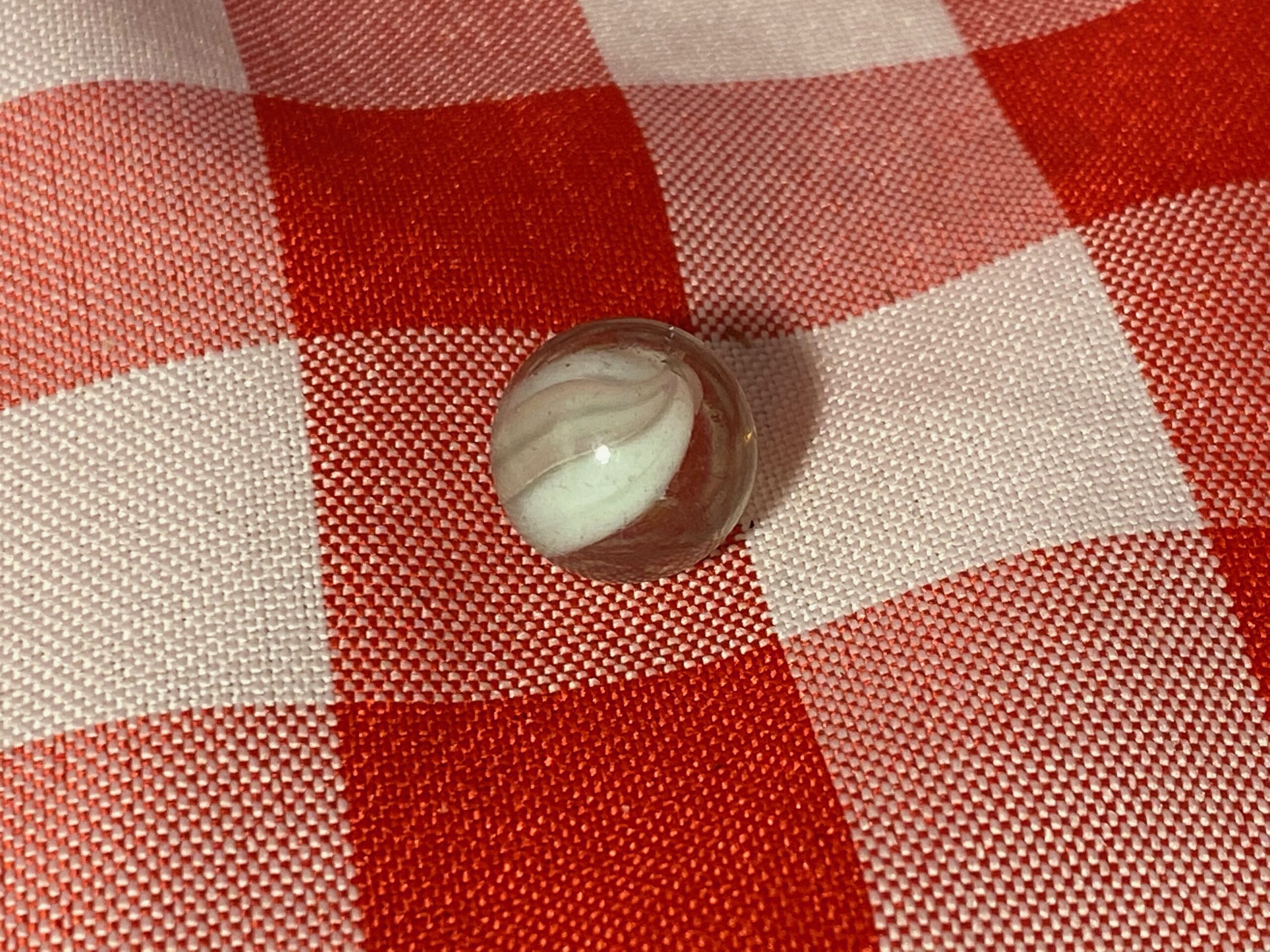
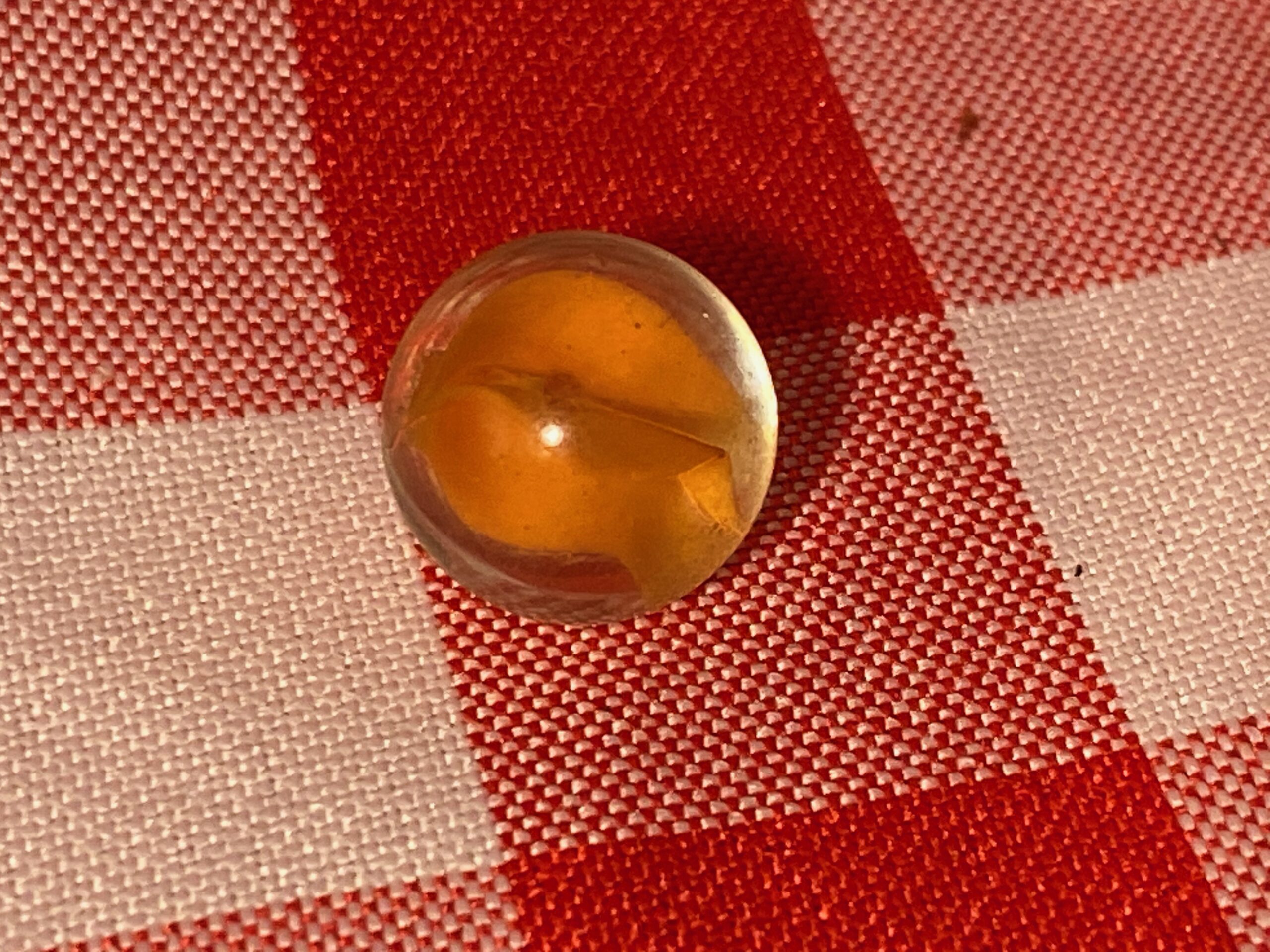 #2) Light orange swirl inside clear glass (above)
#2) Light orange swirl inside clear glass (above)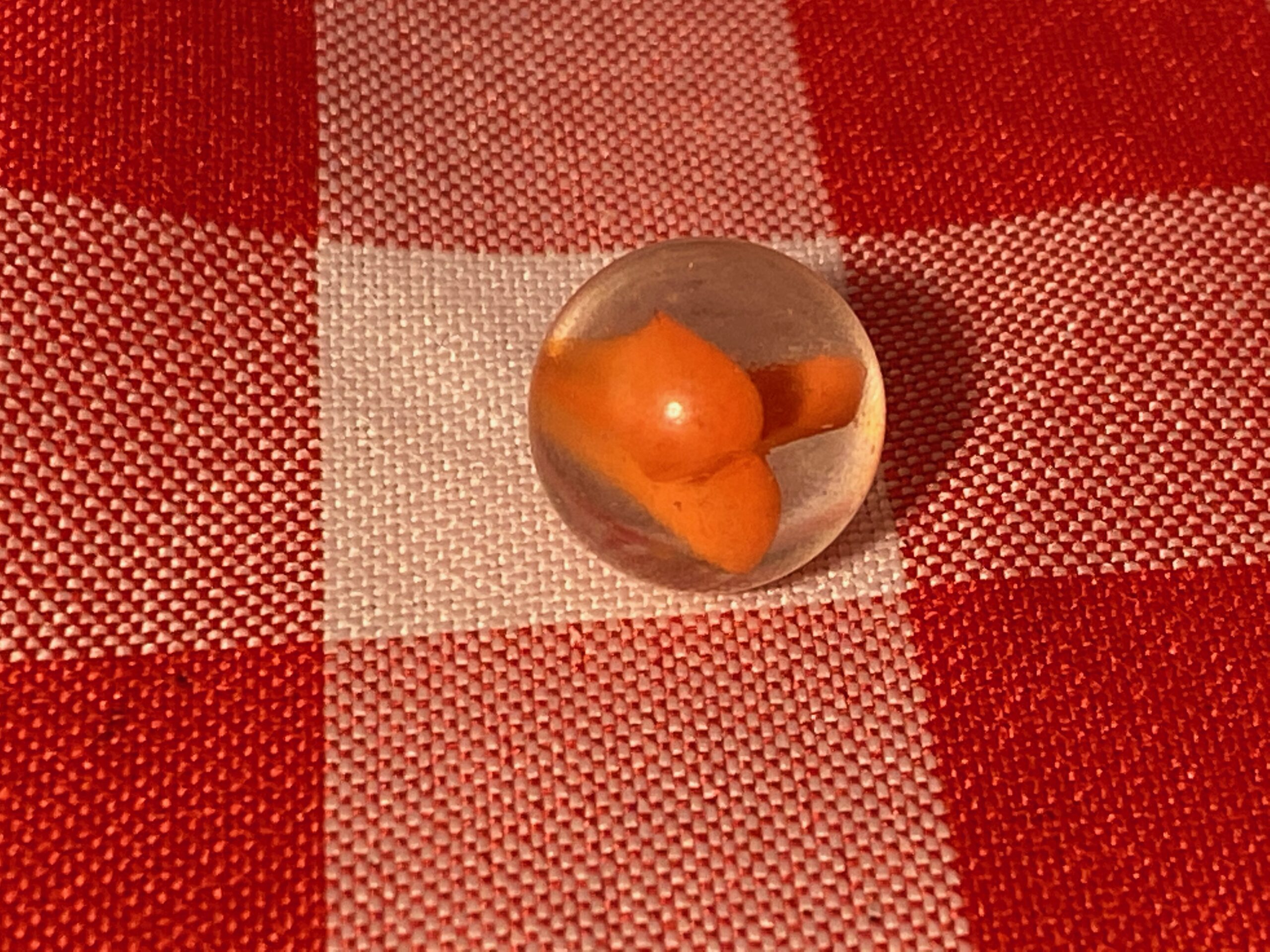 #3) Dark orange swirl inside clear glass (above)
#3) Dark orange swirl inside clear glass (above)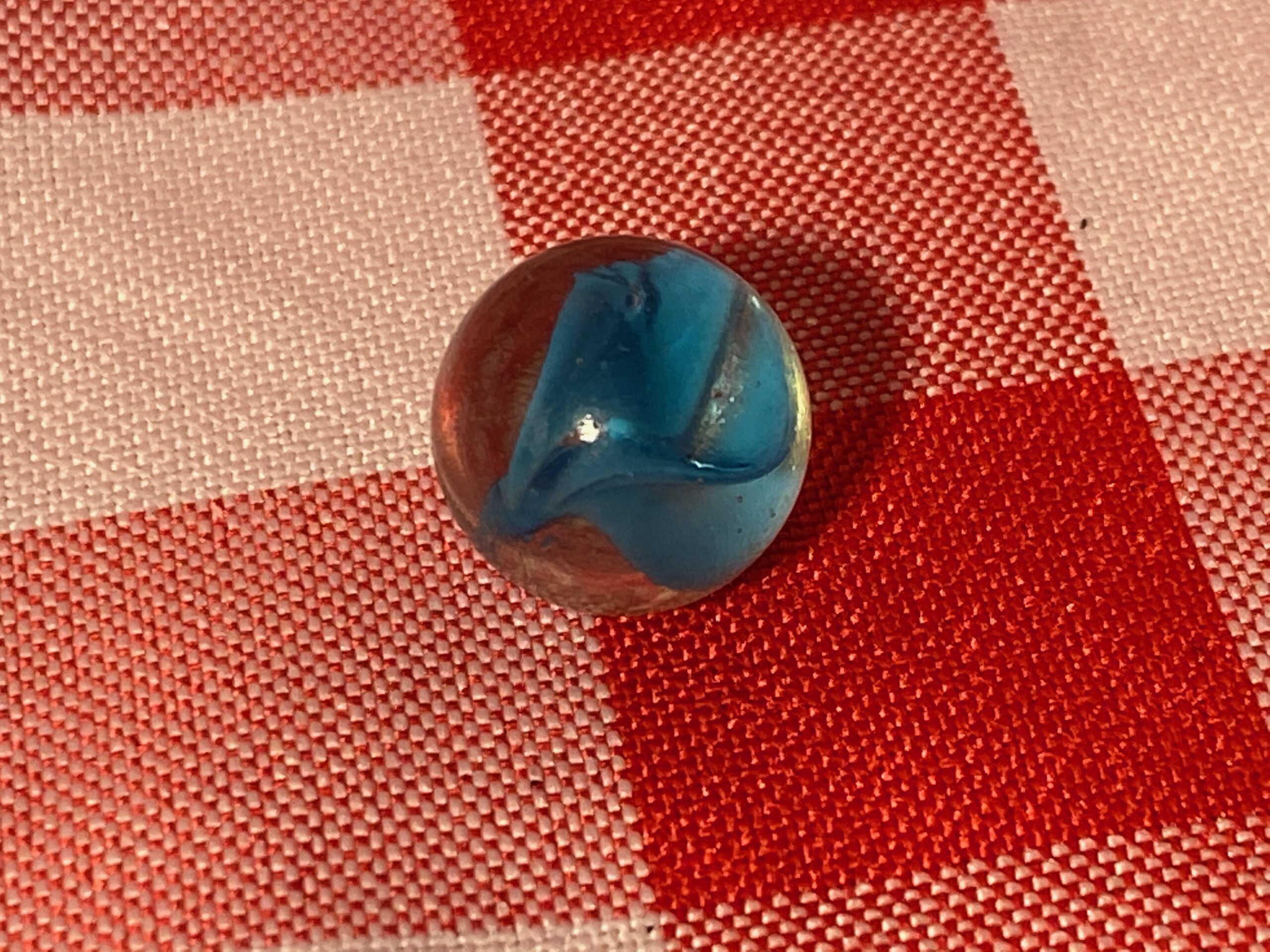
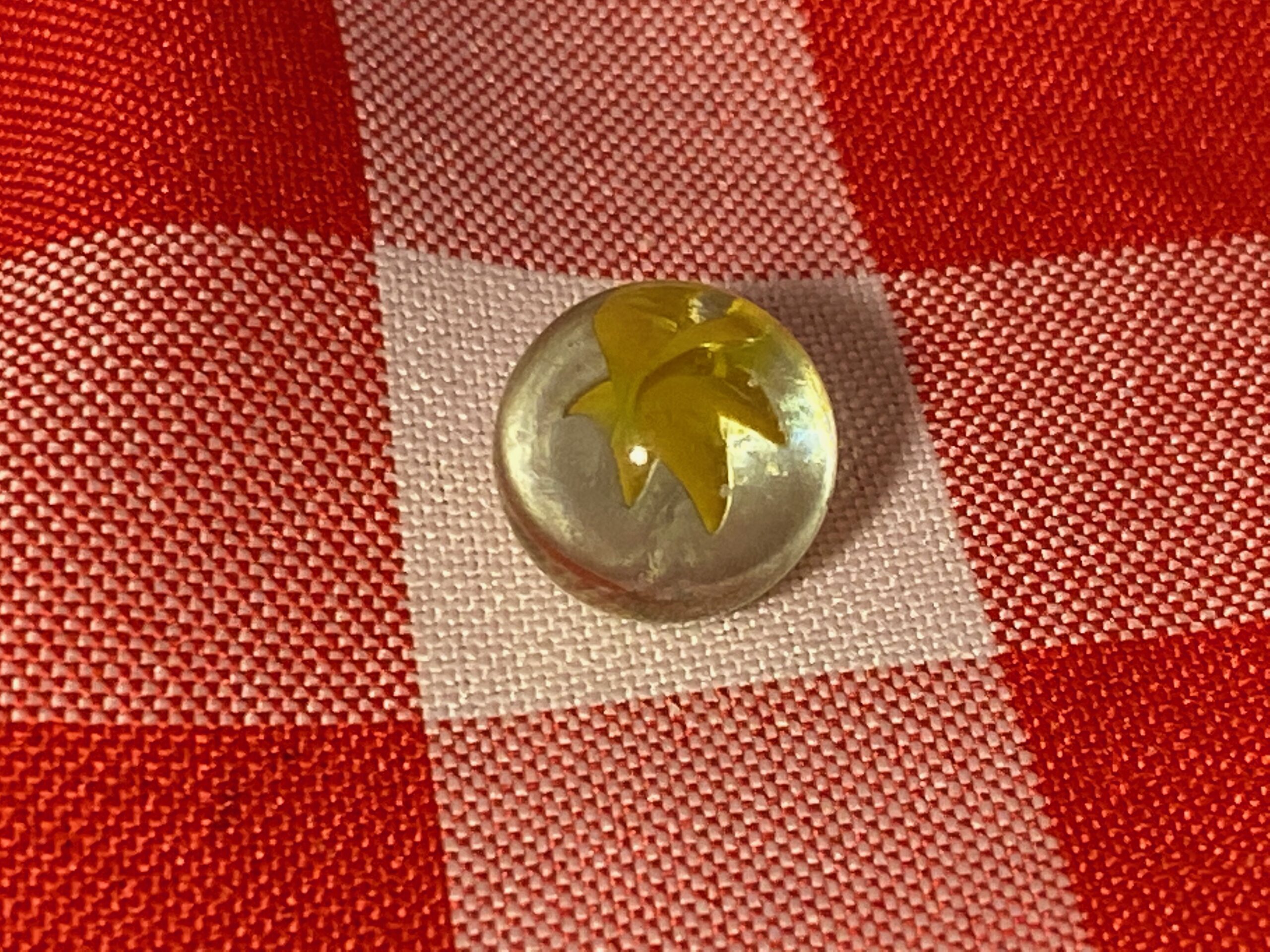 #8) Yellow star inside clear glass
#8) Yellow star inside clear glass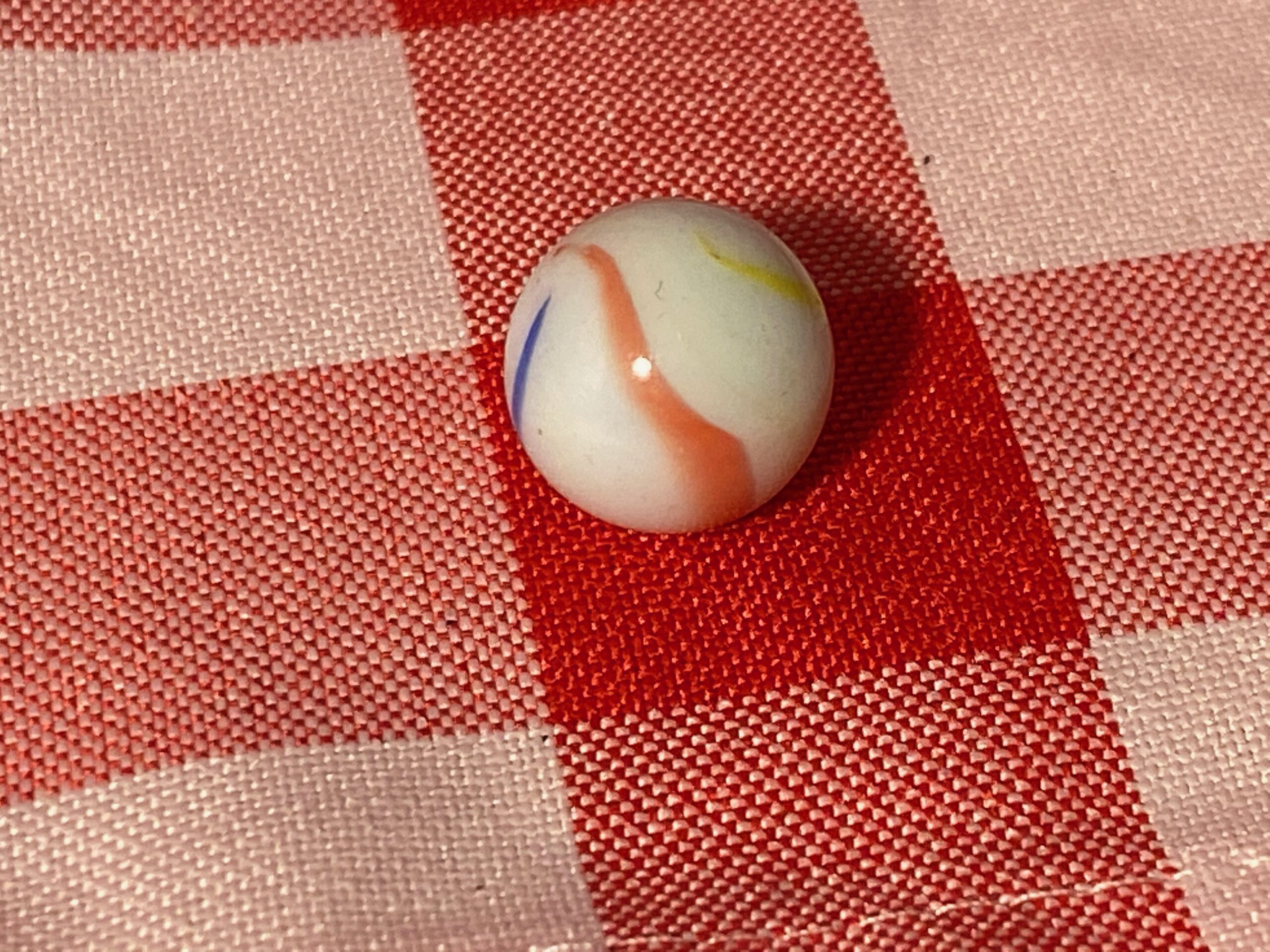
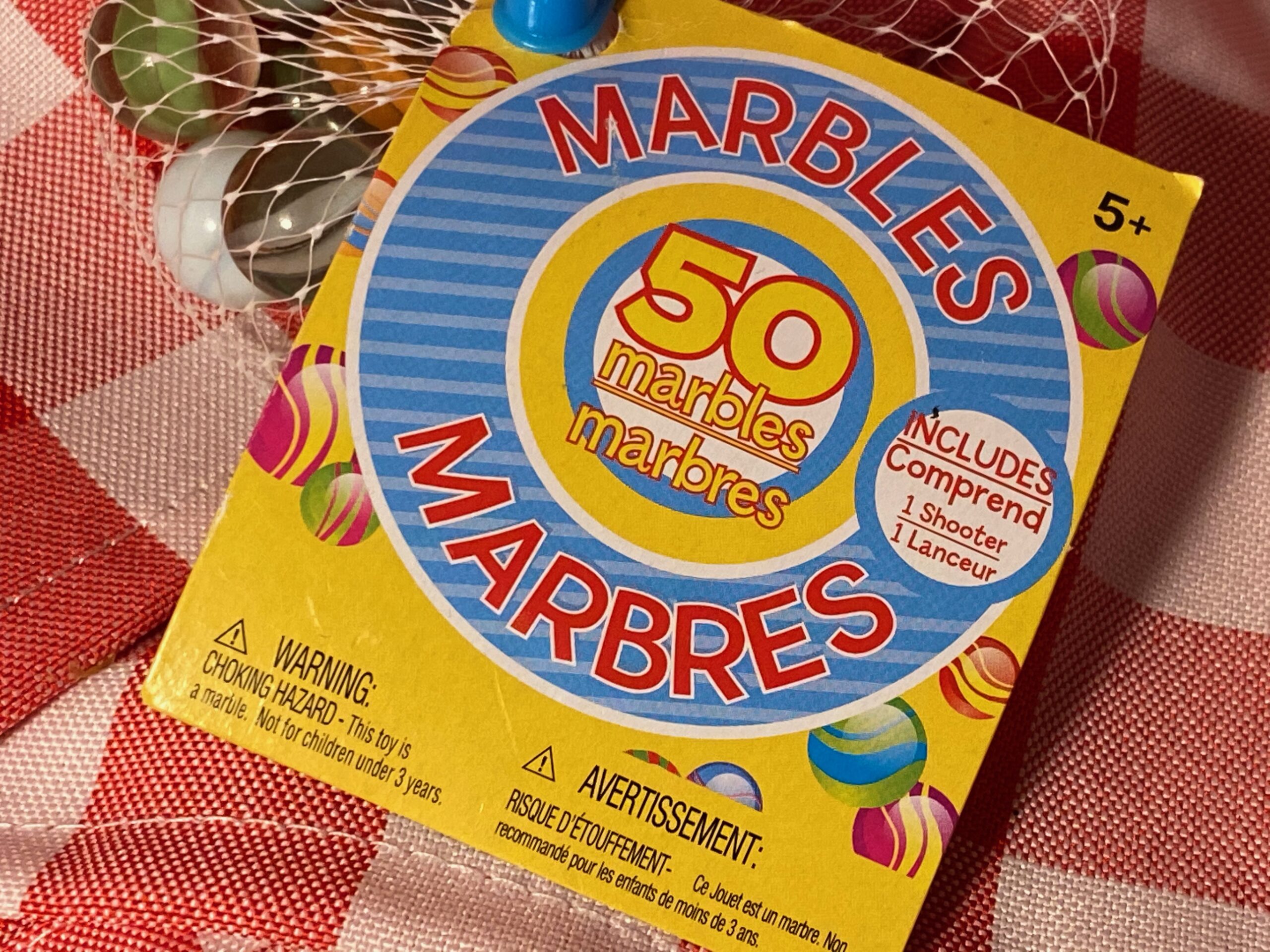

We have marbles from a larger box full of them, with the exact same packaging branding/graphic design, from Walmart (around 2015 I think). We play with them all the time. But I may just stick them in a jar on a shelf to look pretty…
I’m totally with you that we shouldn’t encourage/support/buy things that use these ugly manufacturing processes like this. But I wanted to make sure I understood what I read above – Having already bought these, do you think they are unlikely to cause any harm to a child’s heatlh just by handling them?
Additional question-
I bought a couple of large, greenish/blueish marbles from a display bowl on the counter at an antique shop. Should I assume that any ‘antique’, colored glass is going to have contaminates like these? Are they an issue to handle, or safe as along as we aren’t licking them?
Thank you so much for letting us ask questions like these, on your helpful posts!
Short answer is yes. Antiques in particular did not really worry about what they were adding to their products or did not recognize the dangers. There are regulations now and loop holes. But unless you can actually test the product, you won’t know for 100% certainty. I doubt the glass itself could harm you from simply playing with them though. It’s more the colouring on the inside if chipped or broken.
These were Made in China. Although it might be the same if made in the US. Maybe in Europe they would not have these contaminates? Was the glass itself laced with any toxins? Lead for instance? Or just the inside colouring to get the brilliance that we all expect?
It’s the colorants in the glass. Country of origin doesn’t really matter. I haven’t found toxicant-free marbles.
Tamara